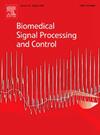Inpainting of ultrasound cardiac tissues with consistent anatomical structures
IF 4.9
2区 医学
Q1 ENGINEERING, BIOMEDICAL
引用次数: 0
Abstract
Image inpainting techniques play a crucial role in restoring occluded regions in medical images, ultimately enhancing the consistency of clinical diagnoses. Traditional inpainting methods often face challenges when attempting to restore complex anatomical structures and large occluded areas in medical ultrasound images. While recent deep learning-based techniques show promise, they still encounter issues such as loss of edge information and inconsistent reconstruction in occluded regions. In this paper, we introduce a Segmentation-guided Medical Ultrasound Inpainting framework designed to overcome these limitations. Our framework integrates segmentation-derived edge priors to guide the inpainting process, ensuring anatomical consistency and enhancing the recovery of fine details. We propose a Multi-Scale Mixed Residual Block to improve the model’s ability to restore large masked regions and a Deformable Edge Attention mechanism to preserve critical edge details during downsampling while minimizing the introduction of noise. Extensive experiments on two publicly available echocardiography datasets show that our method significantly outperforms state-of-the-art inpainting models in terms of PSNR, MAE, and SSIM metrics. The results highlight the potential of our approach to provide accurate, consistent ultrasound image reconstruction, making it a valuable tool for clinical diagnostics.

具有一致解剖结构的超声心脏组织
图像修复技术在恢复医学图像中的闭塞区域,最终提高临床诊断的一致性方面起着至关重要的作用。传统的修复方法在试图恢复医学超声图像中复杂的解剖结构和大面积闭塞区域时往往面临挑战。虽然最近基于深度学习的技术显示出前景,但它们仍然遇到诸如边缘信息丢失和闭塞区域重建不一致等问题。在本文中,我们介绍了一个分割引导的医学超声成像框架,旨在克服这些限制。我们的框架集成了分割衍生的边缘先验来指导涂漆过程,确保解剖一致性并增强精细细节的恢复。我们提出了一种多尺度混合残差块,以提高模型恢复大掩蔽区域的能力,并提出了一种可变形边缘注意机制,以在降采样期间保留关键边缘细节,同时最大限度地减少噪声的引入。在两个公开可用的超声心动图数据集上进行的大量实验表明,我们的方法在PSNR、MAE和SSIM指标方面明显优于最先进的图像绘制模型。结果突出了我们的方法提供准确,一致的超声图像重建的潜力,使其成为临床诊断的宝贵工具。
本文章由计算机程序翻译,如有差异,请以英文原文为准。
求助全文
约1分钟内获得全文
求助全文
来源期刊

Biomedical Signal Processing and Control
工程技术-工程:生物医学
CiteScore
9.80
自引率
13.70%
发文量
822
审稿时长
4 months
期刊介绍:
Biomedical Signal Processing and Control aims to provide a cross-disciplinary international forum for the interchange of information on research in the measurement and analysis of signals and images in clinical medicine and the biological sciences. Emphasis is placed on contributions dealing with the practical, applications-led research on the use of methods and devices in clinical diagnosis, patient monitoring and management.
Biomedical Signal Processing and Control reflects the main areas in which these methods are being used and developed at the interface of both engineering and clinical science. The scope of the journal is defined to include relevant review papers, technical notes, short communications and letters. Tutorial papers and special issues will also be published.
 求助内容:
求助内容: 应助结果提醒方式:
应助结果提醒方式:


